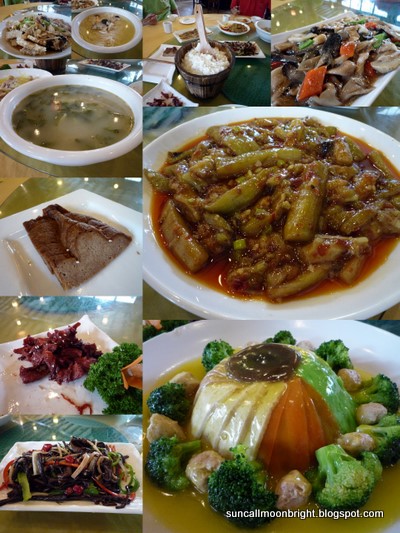View the previous related post here. Return to the trip index here.
30 May 2009
Returning from Wuhou Shrine, we linked up with the rest of the tour group. Then, our coach took us to Wenshu Monastery (文殊院, Wen Shu Yuan) for a visit and lunch. The monastery was originally built during the Sui Dynasty by a prince for his wife. By the time of the Qing dynasty it was old. One of the monks here tried to restore parts of the monastery. It is said that when he passed away, an apparition of the Wenshu bodhisattva appeared. Believing him to be an incarnation of Wenshu, the monastery was renamed to its present name.
Entrance to the monastery, tickets need to be purchased at a low price
First temple building
Second temple building, seems like a junior monk was bringing around a senior monk in the trishaw
Vegetarian restaurant where we will be having lunch

Nice and tasty
A pavilion
The Thousand Buddha Peace Pagoda
A large bell
Outside the monastery is Wenshu Place (文殊坊, Wen Shu Fang) that is similar to Jinli Street we visited in the morning. However it was larger and consists of a few streets instead of a single one.
Wenshu place was also much less crowded than Jinli Street
They make the patterned candy here too
A farmer with his pigs?
After some shopping around Wenshu place, we returned to the hotel. Having free and easy time before dinner, we decided to go to the main shopping belt in Chengdu, Chun Xi Street (春熙街).
Front and back of Gao Yuan An, a traditional chinese medicine for high altitude sickness. Having visited the doctor to get Acetazolamide before the trip, I did not eat them but judging from the rest of the tour group's reaction to high altitude later, it seems to be effective and the domestic tourists all use these kind of medicines.
Along Chun Xi Street
The mannequin is alive!
A little train takes you around if you are tired
A statue of Sun Yat Sen
Kalomani? Hmmm...
Before long it was time for dinner at this vegetarian restaurant in an almost empty shopping mall. Surprisingly business was brisk here.

That's probably because the food was great!
After dinner, I decided to go see some local Sichuan performances at the cost of RMB 180
Feet juggling of a table
Short clip of the table balancing act
A puppeteer
My local guide says Chengdu man are laid back and love to play mahjong while the women make fierce wives. This was a performance whereby a wife punished her husband by making him do different stuns while balancing a lighted oil lamp on his head. Serves him right for gambling his clothes away.
Shadow show, really talented artist
Then came the highlight of the show, Bian Nian (变脸), literally: Face Change
Short clip of the Face Change performance. What is really impressive is that the puppet does the Face Change too!
Another cool part, Bian Yi (变衣), literally: Clothes Change
Short clip of Clothes Change performance, his mask changes with his clothes! Watch the curtains closely!
After the performances we returned to our hotel for an early night's rest. Tomorrow we will be flying to Nyingchi, Tibet. This will be the first time I am in the high lands and I was rather excited. There is only one flight per day, early in the morning. It seems that weather conditions there makes it less suitable for aircraft later in the day.
View the next related post here. Return to the trip index here.
View the next related post here. Return to the trip index here.